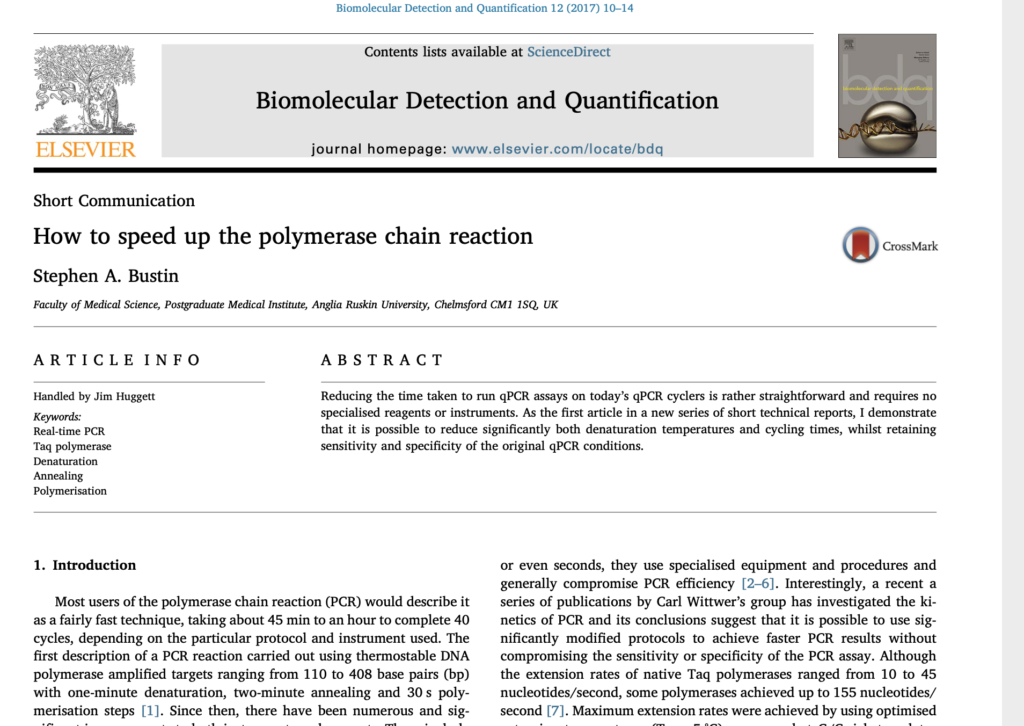How to speed up the polymerase chain reaction
Stephen A. Bustin|Faculty of Medical Science, Postgraduate Medical Institute, Anglia Ruskin University, Chelmsford CM1 1SQ, UK|2017|Biomolecular Detection and Quantification|12,10-14 http://dx.doi.org/10.1016/j.bdq.2017.05.002
Since the inception of qPCR in 1993, there has been significant improvements to both instruments and reagent. These improvements have led to fast reaction times, with runs reduced to 30 minutes. This study was done to show that it is feasible to obtain good PCR results with low denaturation temperatures. 6 qPCR assays targeting GAPDH, IGF-1, IGF-1R, TP53IP3, Ubiquitin C (UBC) and Vitamin D Reporter (VDR) were selected for this study. All primers were at a final concentration of 300nM. Two master mixes (SensiFAST (Bioline) and KAPA mastermix) and two qPCR machines (Mic qPCR (Bio Molecular Systems) and CFX Connect (Biorad)) were used for comparison in performance. It was shown that successful PCR results can be achieved over a wide range of temperatures and time conditions without comprising sensitivity or specificity. The comparison between the two qPCR machines shows that there is an advantage of using Mic over CFX Connect as the Mic produces accuracy with faster denaturation and anneal times as well as more specific differentiation in melt curves (<0.1°C) between different targets amplicons. The comparison of the two master mixes shown very similar results across the temperature range.
